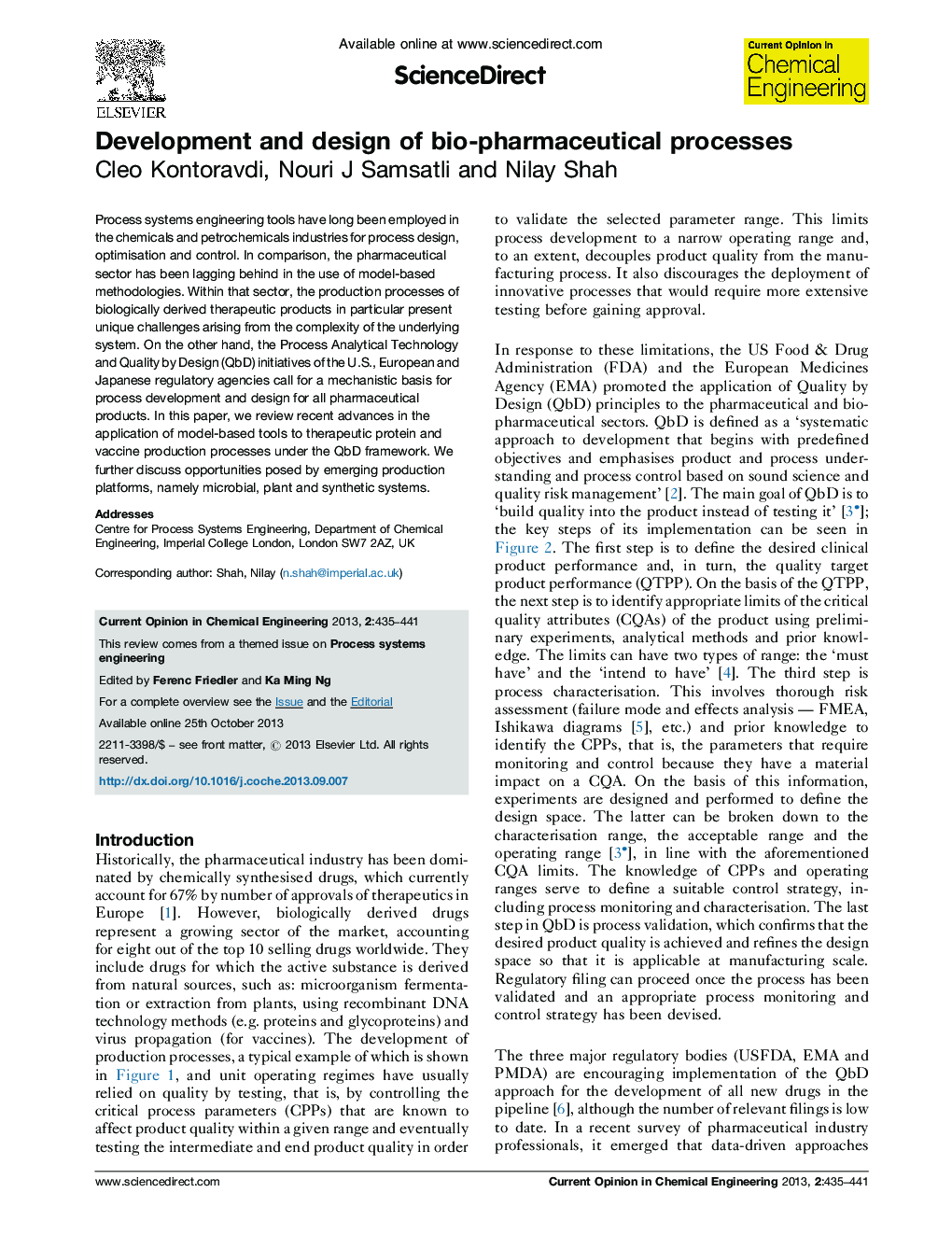| Article ID | Journal | Published Year | Pages | File Type |
|---|---|---|---|---|
| 174466 | Current Opinion in Chemical Engineering | 2013 | 7 Pages |
•Bioprocess design is hampered by lack of fundamental process models and data.•This hinders the move to a ‘quality-by-design’ (QbD) approach.•Quantitative understanding of how process variables affect product quality required.•PSE techniques are just beginning to be used to help identify the ‘Design Space’.•Increasing application of predictive process models is expected.
Process systems engineering tools have long been employed in the chemicals and petrochemicals industries for process design, optimisation and control. In comparison, the pharmaceutical sector has been lagging behind in the use of model-based methodologies. Within that sector, the production processes of biologically derived therapeutic products in particular present unique challenges arising from the complexity of the underlying system. On the other hand, the Process Analytical Technology and Quality by Design (QbD) initiatives of the U.S., European and Japanese regulatory agencies call for a mechanistic basis for process development and design for all pharmaceutical products. In this paper, we review recent advances in the application of model-based tools to therapeutic protein and vaccine production processes under the QbD framework. We further discuss opportunities posed by emerging production platforms, namely microbial, plant and synthetic systems.
